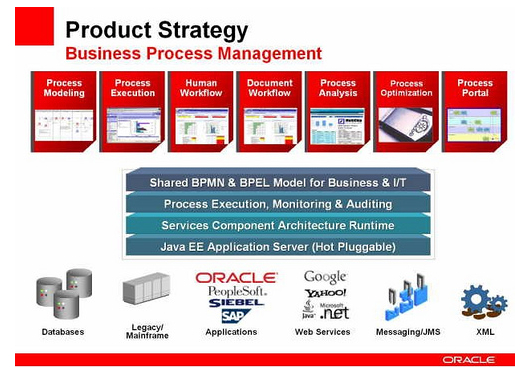Oracle's BEA strategy: reassuring the market

Earlier today, Oracle outlined its strategy regarding the recently acquired BEA portfolio. If I hadn't known it was supposed to be a customer and partner webinar, I'd have thought we were listening to a more detailed re-run of the latest earnings call with Charles Philips talking about how Oracle is the number one in (name your market) enterprise solutions market. It wasn't until Thomas Kurian, who has most recently been overseeing the much delayed Fusion project, took the stage that we got into anything beyond pure PR. Even then it felt like Kurian had been scripted within a micron of his evenly modulated canter through the rejigged BEA suite.
Oracle was at pains to reassure customers there won't be any forced migration between any existing and acquired overlap products. Buyers should not be that easily taken in. You can bet that with a shiny new price book in hand and the now oft repeated emphasis on middleware being the current Oracle growth engine for new software licenses that the bag carriers will be talking up the acquired products like crazy.
A degree of rationalization was inevitable and will be welcomed. Even so, fellow Irregular Sandy Kemsley sees it slightly differently:
My issue is with the overlap between the “strategic” category, which can include a convergence of an Oracle and a BEA product, and the “continue and converge” category, which includes products that will be converged into another product: when is a converged product considered “strategic” rather than “continue and converge”, or is this just the spin they’re putting on things so as to not freak out BEA customers who have put huge investments into a BEA product that is going to be converged into an existing Oracle product?
All BEA products that are in maintenance only mode will continue to be supported. No surprise there. As we know, Oracle is fast becoming a legacy based maintenance engine where the margins are ridiculously high. I've long held the view this is unsustainable in the long term because it does nothing for innovation. Some of my colleagues disagree, pointing out that maintenance is like the software equivalent of crack cocaine: incredibly expensive in the long term but highly addictive for vendors keen to eek out revenue streams and for buyers terrified that product life cycles will come to an end.
One area where I pricked up my ears was when Kurian started to talk about the co-mingling of human interactions with process automation (see image above.) Back to Sandy who summarizes it succinctly:
Oracle sees four types of business processes — system-centric, human-centric, document-centric and decision-centric (which match the Forrester divisions) — but believes that a single product/engine that can handle all of these is the way to go, since few processes fall purely into one of these four categories
During this part of Kurian's presentation, he talked about the integration and process management between day to day ERP style applications and the emerging breed of social software. Right now, it is hard to fully imagine how this is going to work in the real world across different types of application although I have seen an outline for how a Twitter clone might be integrated to sales service issues. (Disclosure: I am part of the team that's working on this.) It will be interesting to see Oracle's take on this over time. Right now, my sense is there's a lot of force fitting going on to include things like Google Maps and IM into existing structured Oracle processes rather than considering how processes might evolve.
The replay of the strategy outline should be available here.
